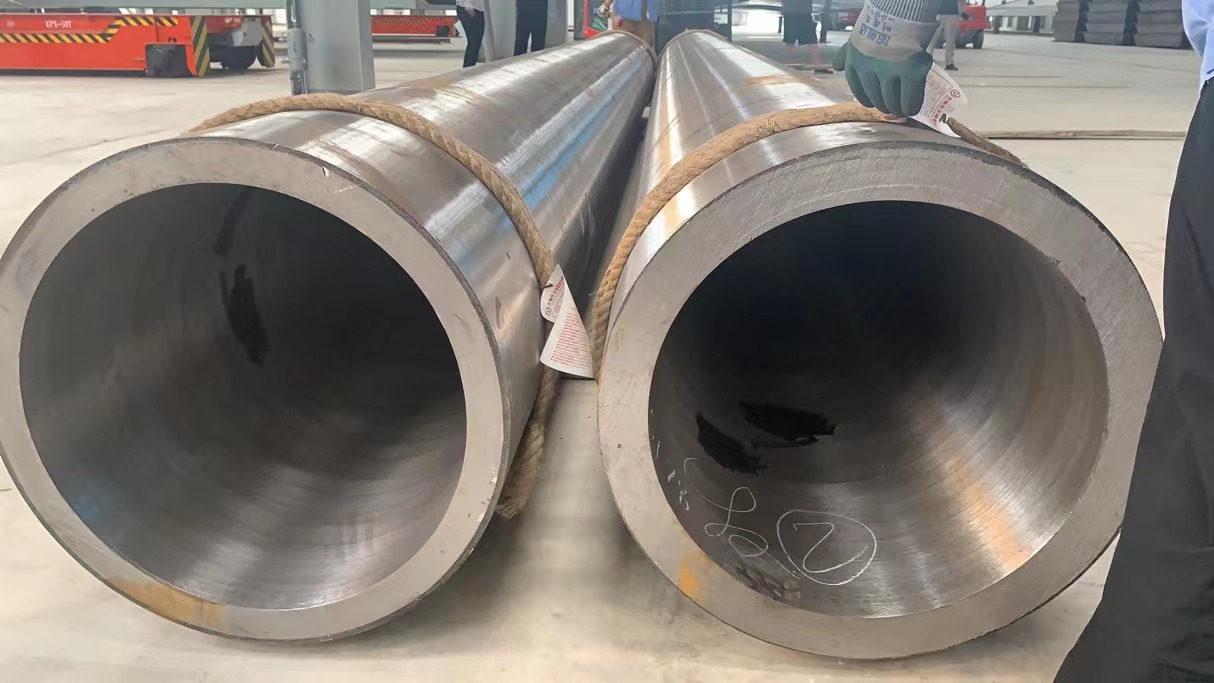jan . 16, 2024 12:18 Reen al listo
how are steel tubes made-Welded Steel Pipe
Ŝtala Tubo Kaj Ŝtala Tubo En Profundo-Ŝtala Tubo
Ŝtaltubo (kaj Steel Pipe) evoluis dum historio. Specife, metaltubo ekzistas ekde ĉirkaŭ 3000 a.K. Fakte, egiptoj faris la unuan metalpipon el kupro.
Jam 2500 a.K. ĉinoj uzis bambuan pipon kiel manieron transporti gason
As early as 2500 BC, Chinese used bamboo pipe as a way to transport natural gas to light Peking, their capital. Rome and Persia created aqueducts to bring water to city centers for bathing, washing and drinking.
Krome, pipo (aŭ tubo) estas farita per multaj malsamaj materialoj kaj metodoj. Kavigita ŝtono, pafita argilo, bambuo, palmo, sekvojadendro, plumbo, bronzo, kupro, kaj kaŭĉuko estas nur kelkaj el la materialoj kiuj ŝminkotuboj.
In the mid-1800’s the modern steel industry was bolstered with the Bessemer process. The Bessemer process represented the first inexpensive method for mass production of steel pipe. Subsequently, seamless tube was born in 1895. Quickly followed by manufacturing of auto, bicycle, and machinery for oil production which began in full force.
It was not long after, that efficiencies in manufacturing lowered prices and steel pipe and tubes became common. Presently, there are many different types of Steel Tube and Steel Pipe being manufactured. Depending on the application, J524 Seamless Hydraulic Tubing, J525 Welded Hydraulic Tube, and many other specialty steel tubing and piping are available.
To better understand steel tubing, let’s explore the differences between steel tube and steel pipe. Most would think that both are the same. Though there are many distinctions between them, i.e. standards, measurements, uses, and applications.
Mekanika Tubo
Tubo Kaj Pipo Kompare
Firstly, there IS a difference between a steel tube and steel pipe. It’s NOT just about semantics. The basic distinction is their common uses, measurement, and terminology. Let’s take a look..
Ŝtala Tubo
Tubo, ĝenerale, estas por pli malgrandaj aplikoj, t.e. hidraŭlika, fuellinioj, ktp.
Grandeco: And regardless of its material, steel tube is measured by its actual outside diameter (OD). For instance, the diameter of a 1 ¼” tube is a true 1.25″, while a 1 ¼” pipe is 1.625″. The Mura dikeco de pli maldika tubo estas mezurita per mezurilo dum pli dika tubo estas mezurita en frakcioj aŭ milimetroj. Tamen, ĉi tio NE validas por pipo. A pipe’s wall thickness is referred to as “Schedule” specified by ASME B36.10. NOTO: There is no set formula between a pipe’s Schedule and its wall thickness. One needs to refer to ASME B36.10 for relevant standards.
MATERIALO: Ofte farita el milda ŝtalo, aluminio, latuno, kupro, kromo aŭ neoksidebla ŝtalo.
ALIGO/VELDO: Tuboj estas kunigitaj per brazado, ekflamado aŭ aliaj mekanikaj rimedoj kiel kupladoj.
MEKANIKAJ/KEMIAJ PROPIETOJ: Steel tube chemical properties are very important for quality and process. Therefore, its microelements such as chemical composition are crucial. In addition, mechanical properties such as tensile, yield strength, and elongation are specified depending on its application.
Ŝtala Pipo
Pipo estas ĝenerale uzata por pli grandaj aplikoj, te nafto kaj gaso transmisilinioj, rafinejoj, kaj struktura.
Chicago Distribution Center and Warehouse – Steel Pipe and Steel Tube
Grandeco: For instance, steel pipe diameter is indicated by its “Nominala” thickness and NOT actual thickness. In other words, “Nominal” or NPS is a non-dimensional number referring to the diameter of a pipe’s hole. Normaj pipaj horaroj kaj grandecoj are specified differently than tubing. Piping is identified by its diameter with another non-dimensional measurement for its wall thickness (Schedule). For example, a 2″ (2.375-inch) diameter pipe that has Schedule 40 has a wall thickness of 0.154″. Whereas, a 1″ diameter Schedule 40 pipe actual wall thickness is 0.133″. OD’s (Outside Diameter) of pipe remains the same regardless of its Schedule.
MATERIALO: Ofte farita el karbonŝtalo kaj/aŭ malalta aloja ŝtalo.
ALIGO/VELDO: Kunigi ŝtaltubon estas tre laborintensa. Veldado, prema kunigo, flanĝoj kaj surfadenado estas la ĉefaj metodoj por kunigi stelpipon.
MEKANIKAJ/KEMIAJ PROPIETOJ: The chemical elements of steel pipe, i.e. Carbon, Manganese, Silicon, Sulfur, and Phosphorus are its main components., However, unlike a steel tube, few microelements in steel pipe are required. Instead, a steel pipe’s pressure rating, ductibility, and yield strength are most important.
Tubaj Kaj Tubaj Toleremoj
Pro aplikaj postuloj, premaj propraĵoj kaj aliaj specifoj por tubo estas strikte indikitaj. Tamen, la toleremoj por pipo estas pli lozaj ol tubo. La pli posta estas toleremo specifa rilatante al diametro, murdikeco, rondeco, kaj rekteco.
Konsideroj pri fabrikado
As stated previously, tube and pipe have unique use requirements. Steel tubing is used in more precision applications than pipe. Therefore, pipe manufacture costs less to manufacture due to fewer precision requirements. While tubing requires more use capabilities and narrower tolerances, raising its manufacture costs.
Applications
Tubing is well-suited for applications such as medical, weaponry, machinery parts, boiler tubes, and exchanger which require precise outside diameters and other measurement requirements. While steel pipe is used to carry large amounts of gas and fluids, their OD (Outside Diameter) and ID (Inside Diameter) determine the flow rate and pressure capabilities. However, tolerances for pipe is typically less demanding.
-
Carbon Steel Tube Pressure Rating-steel pie
NovaĵojJan.16,2024
-
Stainless steel-Electric Resistance Welded (ERW) Pipe-Welded (ERW) Pipe
NovaĵojJan.16,2024
-
High Frequency Electric Weld (ERW) Line Pipe and Standard Products-ERW Steel Pipe
NovaĵojJan.16,2024
-
How Is Steel Tubing Made?-Steel Tubing
NovaĵojJan.16,2024
-
Structural steel Pipe-ERW Steel Pipe
NovaĵojJan.16,2024
-
Methods of Manufacturing used in the Metal Pipe and Tubing Industries-ERW Steel Pipe
NovaĵojJan.16,2024
